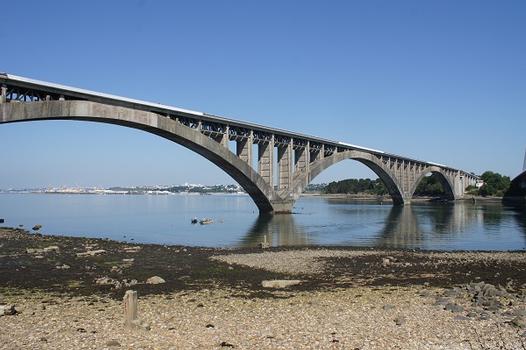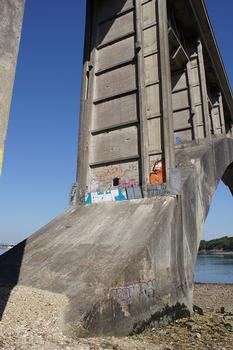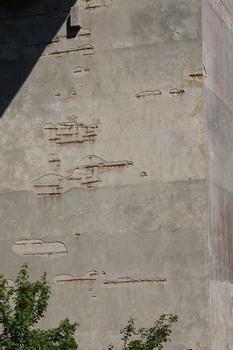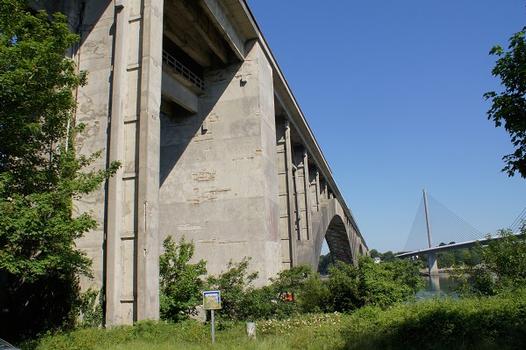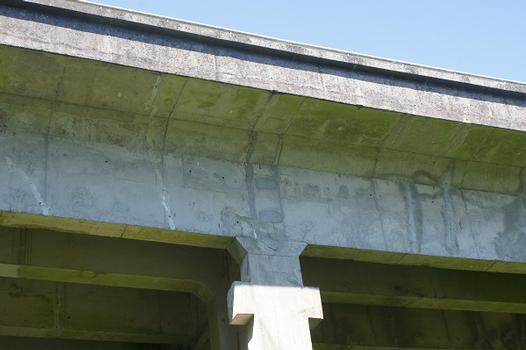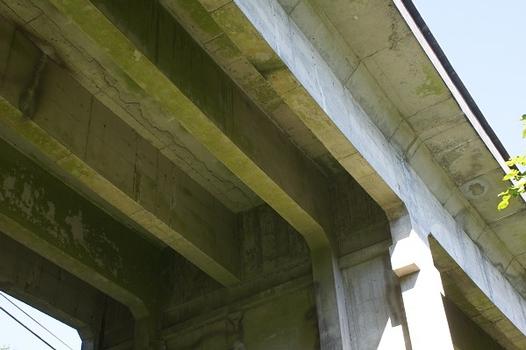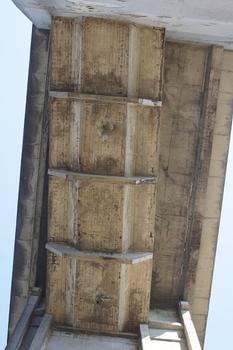General Information
| Name in local language: | Pont Albert-Louppe; Pont de Plougastel |
|---|---|
| Other name(s): | Albert Louppe Bridge |
| Beginning of works: | 1926 |
| Completion: | 9 October 1930 |
| Status: | in use |
Project Type
| Structure: |
Deck arch bridge |
|---|---|
| Material: |
Reinforced concrete bridge Structurae Plus/Pro - Subscribe Now! |
| Function / usage: |
original use: Road bridge original use: Railroad (railway) bridge current use: Bicycle and pedestrian bridge |
Awards and Distinctions
| 2000 |
for registered users |
|---|
Location
| Location: |
Plougastel-Daoulas, Finistère (29), Bretagne, France Le Relecq-Kerhuon, Finistère (29), Bretagne, France |
|---|---|
| Crosses: |
|
| Next to: |
Iroise Bridge (1994)
|
| Coordinates: | 48° 23' 15.09" N 4° 23' 59.29" W |
Technical Information
Dimensions
| height | 42.51 m | |
| total length | 888 m | |
| roadway / carriageway width | 6.00 m | |
| arches | rise | 35.5 m |
| main spans (3x) | 186.4 m | |
| deck | width | 9 m |
| deck width | 9 m |
Materials
| deck |
reinforced concrete
|
|---|---|
| piers |
reinforced concrete
|
| arches |
reinforced concrete
|
Chronology
| 12 October 1930 | The bishop of Quimper blesses the bridge in the presence of 50 000 people. |
|---|---|
| 1944 | Arch on the Brest side is destroyed by retreating German troops. |
| 1949 | Reopened after widening and reconstruction. |
Excerpt from Wikipedia
The Plougastel Bridge, or Albert-Louppe Bridge, is a bridge over the river Élorn near Brest, France, connecting Plougastel-Daoulas and Le Relecq-Kerhuon.
Construction on the Plougastel Bridge started in 1926 and was completed on 9 October 1930. Part of it was destroyed by the German army in 1944, and shortly after was closed for repair. It was reopened after the widening and construction five years later. Between 1991 and 1994 another bridge, the Pont de l'Iroise, was built parallel to this bridge. Today the Plougastel carries tractor, pedestrian and bicycle traffic and is a landmark on the route of the Paris–Brest–Paris bicycle event.
The Plougastel Bridge is an arch bridge, or has a fixed, double deck structure. The arches are composed of concrete and have a total length of around 888m. The three major spans are 188 m but sometimes said to be 186 m.
The engineer who constructed the bridge was named Eugène Freyssinet, and the president of the committee managing the project was Albert Louppe, an explosives engineer who pursued a parallel career in politics, becoming the Senator for Finistère in 1921. Louppe died in 1927, one year after work on constructing the bridge finally began.
Text imported from Wikipedia article "Plougastel Bridge" and modified on December 7, 2023 according to the CC-BY-SA 4.0 International license.
Participants
Relevant Web Sites
Relevant Publications
- (2000): 100 Monuments du XXe Siècle. Patrimoine et architecture de France. Editions France Loisirs, Paris (France), pp. 68-69.
- (1993): Un amour sans limite. Editions du Linteau, Paris (France), pp. 187.
- (1997): L'art de l'ingénieur. constructeur, entrepeneur, inventeur. Éditions du Centre Georges Pompidou, Paris (France), pp. 48-50.
- (2003): Bridge engineering. A global perspective. Thomas Telford, London (United Kingdom), ISBN 9780727732156, pp. 173, 192, 334.
- (1993): Bridges. Macmillan Publishing Company, New York (USA), pp. 112-113.
- About this
data sheet - Structure-ID
20000056 - Published on:
28/10/1998 - Last updated on:
05/02/2016

